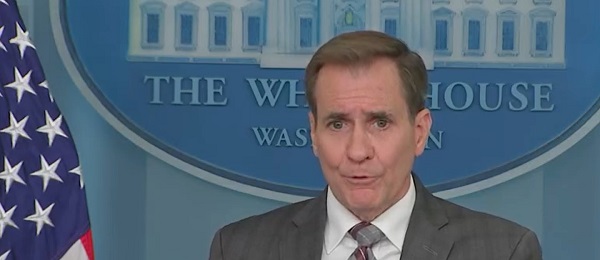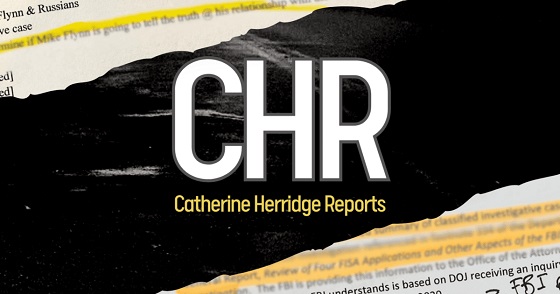conflict
America Is Really Bad At Foreign Interventions. Why Does Biden Think Ukraine Will Be Any Different?

 From the Daily Caller News Foundation
From the Daily Caller News Foundation
One of the very first operations undertaken by the Central Intelligence Agency (CIA) after its founding in 1947 was to create an army to fight the Soviets in Ukraine. Dubbed Operation Nightingale, the CIA aimed to reconstitute Nazi death squads in Ukraine that the Germans called Nachtigall.
The newly created U.S. intelligence community figured we’d partnered with communists to destroy fascism. Now, post war, we could team with the fascists to destroy communism.
Unsurprisingly, Nightingale was a spectacular failure. The Kremlin’s spies discovered every aspect of the plan well before it was initiated.
In its early years, the CIA lurched from one fiasco to another. On Sept. 20, 1949, CIA analysts declared the Soviet Union would not produce a nuclear weapon for at least another four years. Three days later, Truman had to tell the country that Russia had the bomb.
Sadly, things are hardly better today.
In 2021, U.S. intelligence agencies looked into their crystal ball and told senior congressional leaders that Afghanistan’s national security forces could keep the Taliban at bay for a year or perhaps longer. The Taliban took Kabul in a matter of hours.
“Clearly we didn’t get things right” on that intelligence, National Security Council spokesman John Kirby dryly remarked later.
The next year, U.S. intelligence took the opposite tack on Ukraine, predicting the capital, Kiev, might fall within days of Russia’s 2022 invasion. Two years in, Kiev is still in the Ukraine column.
Bonehead analysts even offered to evacuate Volodymyr Zelensky — evidently having learned nothing from the disastrous U.S. evacuation of Afghan President Ashraf Ghani.
What did they get right? Avril Haynes, the Director of National Intelligence, applauded her agency for correctly predicting that Russia planned to invade Ukraine. “We assess President Putin is prepared for prolonged conflict,” she testified in May 2022. You don’t say? The 100,000 troops Putin amassed on Ukraine’s border were likely a helpful clue.
Many in our intelligence community scoffed at Putin’s criticism of America’s heavy hand in Ukraine. Those who dared point out that the CIA had injected former Nazis into Ukraine after World War II were labeled stooges of Russian disinformation. They’d prefer we not recall the U.S.’s more provocative recent history in Ukraine, much of it based on bad American intelligence.
During Ukraine’s Maidan demonstrations in 2013, U.S. officials, including then-Vice President Joe Biden, saw an opportunity to fulfill the predictions of President Jimmy Carter’s national security advisor, Zbigniew Brzezinski, who postulated that “without Ukraine, Russia ceases to be a Eurasian empire.”
By pulling Ukraine closer to Europe, NATO and the U.S., they reasoned we could de-claw the Russian bear. Thus, the U.S. supported ousting the democratically-elected Ukraine president, Viktor Yanukovych. Victoria Nuland, Obama’s Assistant Secretary of State for European and Eurasian Affairs, boasted that the United States had “invested” $5 billion to build Ukraine’s credentials to join the European Union.
She passed out actual cookies during the coup. Nuland was later caught on tape plotting who would be Ukraine’s post-coup president and getting Joe Biden to give an “attaboy” that would “F**k the EU” for not being aggressive enough with Moscow.
On cue, Biden endorsed Ukraine’s uprising: “Nothing would have greater impact for securing our interests.” Yanukovych was ousted and in the months that followed, Nuland pushed the U.S. to arm Ukraine and carefully crafted the media message, “I would like to urge you to use the word ‘defensive system’ to describe what we would be delivering against Putin’s offensive systems.”
If Nuland’s regime-change playbook sounds familiar, stop a moment and ponder that her resume also includes serving as Vice President Dick Cheney’s principal deputy national security advisor. Her husband, Robert Kagan, was among the chief proponents of America’s swell idea to bring democracy and stability to Iraq by toppling Saddam Hussein.
Other U.S. players meddled in Ukraine as well. On April 12th, 2014, CIA Director John Brennan secretly visited Ukraine, kicking off a new covert war with Russia. In a recent report by The New York Times, turns out the CIA has operated a dozen secret bases in Ukraine since his visit. Little wonder Brennan feared a Trump victory.
Trump’s surprising win in 2016 undermined all this maneuvering. “I really hope that you and President Putin can get together and solve your problem,” Trump told Zelenskyy. “That would be a tremendous achievement.” Trump lowered the temperature, but pausing weapons delivery to Ukraine became the root cause of his first impeachment.
Within six weeks of taking office, the Biden administration cranked up aid to Ukraine, delivering $125 million in March 2021. As of two weeks ago, that figure now tops $185 billion.
America holds a long list of failed interventions based on bad intelligence: Afghanistan, Libya, Iraq, Panama, Haiti, Serbia, Grenada, Iran, South Vietnam, Congo, Cuba, Guatemala, Albania and the Dominican Republic, among others.
It doesn’t take an intelligence genius to predict the ultimate outcome of our latest dalliance in Ukraine.
Morgan Murphy is a former DoD press secretary, national security adviser in the U.S. Senate, a veteran of Afghanistan.
The views and opinions expressed in this commentary are those of the author and do not reflect the official position of the Daily Caller News Foundation.
conflict
Ukraine And Russia Scramble To Make Territorial Gains In Anticipation That Trump Will Push For Peace Deal

 From the Daily Caller News Foundation
From the Daily Caller News Foundation
Ukraine and Russia are both vying to make territorial gains ahead of President-elect Donald Trump’s inauguration and his expected push for a peace deal.
Trump has said on multiple occasions that he would bring a swift end to the war, relying on his relationships with both Ukrainian President Volodymyr Zelenskyy and Russian President Vladimir Putin and his ability to negotiate with both. In anticipation that Trump will broker a peace settlement in short order, both Russia and Ukraine are making potential last-ditch efforts to grab territory for the other that they could possibly use as leverage during negotiations, according to The Wall Street Journal.
“They’re assaulting all the time—morning, day, night,” a Ukrainian battalion commander told the WSJ.
One current flashpoint is the Kursk region of Russia, which Ukrainian forces seized part of during an invasion over the summer. Russian forces are desperately vying to take back the territory, according to the WSJ. Moscow has deployed roughly 45,000 troops to the region, and in recent weeks has taken back half of it. North Korea has additionally deployed 10,000 troops to Kursk to aid Russian forces.
Meanwhile, Ukraine has been making use of U.S.-provided long-range missiles to strike targets deep inside Russia, the first time Ukraine has been allowed to do so after two years of war. President Joe Biden’s decision to let Ukraine use the missiles puzzled some national security experts, given the national security risks.
There’s some concern in Kyiv that Trump will approach U.S. support for Ukraine differently than Biden has, and that Trump’s bid to end the war could end up benefiting Russia, according to the WSJ. Ukraine believes Russia wants to retake Kursk before Trump is inaugurated.
“It’s the best Ukrainian forces against the best Russian forces,” a Ukrainian sergeant fighting in Kursk told the WSJ. “At this rate, I see no reason for us to withdraw.”
Russia is losing roughly 1,000 men a day in the fight to retake Kursk, some Ukrainian troops told the WSJ. Russia has lost an estimated 700,000 fighters total since the war began.
Ukraine is betting that if it can hold onto Kursk, it can use the region as leverage in future ceasefire negotiations with Russia, according to the WSJ.
“The Ukrainian strategy there is to hold on to it as a bargaining chip and obtain a favorable attrition ratio vis-à-vis the Russians,” Vienna-based military analyst Franz-Stefan Gady told the WSJ. While it would be difficult for Ukraine to hold on to Kursk, Gady said, “I think the Russians will have a tough fight.”
But the sentiment among some Ukrainian soldiers is wavering, with some feeling anger or confusion toward the Kursk operation and whether it was worth the cost, according to the WSJ. And Moscow hasn’t stopped throwing men toward the frontlines. Ukraine has suffered from a lack of manpower since the war began, and fighters don’t have access to the same military or communication equipment that Russia does.
“I think they’ll eventually push us back,” the Ukrainian battalion commander told the WSJ. “They add more power and more resources, and they have a goal to reach the border at any cost, so they will do it.”
conflict
The West Is Playing With Fire In Ukraine

National Security Communications Adviser John Kirby
From the Daily Caller News Foundation
As wars tend to do, the battle over Ukraine continues to escalate.
It was reported this week that North Korean soldiers in the conflict total 10,000 thus far and that Russia has rewarded Pyongyang by sending its excellent air defense systems to the Korean Peninsula in exchange.
Last month, the National Security Council spokesman, John Kirby, warned that any North Korean troops fighting in the conflict would be, “fair game and fair targets.”
His green light delivered this week when “a high-ranking North Korean military officer [became] a casualty” according to a Wall Street Journal story on Thursday. That strike was allegedly conducted with British Storm Shadow missiles.
Just these recent events further entangle the U.S., U.K., North Korea, South Korea, and China within the Russia-Ukraine conflict.
But the week’s biggest Ukraine news rattled many Americans — the Biden administration authorized Ukraine to strike targets within Russia with the American-made Army Tactical Missile System (ATACMS).
“The missiles will speak for themselves,” Ukrainian President Volodymyr Zelenskyy boasted.
They sure will. First of all, the U.S. doesn’t have many of the $1.3 million missiles to lob around. U.S. Indo-Pacific Command Commander Admiral Samuel Paparo warned an audience at the Brookings Institute this week that the conflicts in the Middle East and Ukraine are “now eating into stocks … and to say otherwise would be dishonest.”
I’ve met and been briefed by Admiral Paparo, who is one of the most positive and straight-talking flag officers in our military. If he is publicly ringing the warning bell, U.S. policy leaders should take heed.
Putin did not take the news of the ATACMS well. In response, he announced the use of a hypersonic ballistic missile on Thursday, carefully noting that it didn’t carry a nuclear warhead. The unspoken part: next time, it might.
What’s the goal in Biden’s escalation? It seems the White House is trying to prevent the inevitable or blame Trump for Ukraine’s upcoming defeat.
What they won’t admit is that the metrics of the war are not in Ukraine’s favor, and frankly never have been. No supersonic missile will change the immutable: Russia boasts a population five times Ukraine’s and when it comes to war materiel, Russia is winning. Despite Biden’s attempt to hobble the Russian economy, Putin’s war industry is outproducing the West by three times in the basic munitions needed to prosecute a land battle.
But aren’t Russians dying en mass on the battlefield?
Western leaders keep touting Russia’s high death toll, which estimates now place at 600,000. To military strategists here in the United States, such a human cost is unimaginable. Add up every American combat death going back 160 years through the Gulf Wars, Afghanistan, Vietnam, Korea, World War II, World War I, and even the Union combat deaths in the Civil War, and the number does’t reach what Russia has lost in the past 1,000 days.
American and NATO leaders are foolish to underestimate Russian resolve.
Since its initial blundering and poorly-executed invasion of Ukraine in 2022, Russia has recovered from its mistakes, Russian public support for the war remains high, and the Russian economy hasn’t fallen apart. Putin may have lost the virtue-signaling battle of Ukrainian flag lapel pins, but make no mistake: he’s on a path to win the war.
Biden’s deputy Pentagon press secretary, Sabrina Singh, says don’t worry. On Thursday she told reporters the administration was sending as much American weapons and support to Ukraine as it can muster, “in the weeks and months ahead left of this administration. So, that’s what we’re really focused on.”
What did she make of Putin’s nuclear threat? “I mean, you know, we’ve seen this type of, you know, dangerous, reckless rhetoric before from President Putin,” Singh said.
“I mean, you know?” No, we don’t know. The world hasn’t seen nuclear threats like this since Harry S. Truman demanded Japan surrender.
For anyone worried about the state of our national security, January 20th can’t come quickly enough.
-

 C2C Journal1 day ago
C2C Journal1 day agoWhy the Trump Administration is Unlikely to Impose Import Tariffs on Canadian Oil and Natural Gas
-

 Alberta2 days ago
Alberta2 days agoNew website to explain changes coming to your auto insurance
-

 Addictions1 day ago
Addictions1 day agoParliament votes for proposal recommending hard drug decriminalization
-

 COVID-191 day ago
COVID-191 day agoOntario court throws out Dr. Trozzi’s appeal after medical license revoked over COVID stance
-

 Alberta2 days ago
Alberta2 days agoProvince investing in support for financial literacy in schools
-

 Catherine Herridge2 days ago
Catherine Herridge2 days agoHow X And Joe Rogan Broke The Back of 60 Minutes
-

 Alberta Sports Hall of Fame and Museum1 day ago
Alberta Sports Hall of Fame and Museum1 day agoAlberta Sports Hall of Fame announces Class of 2025
-

 Agriculture2 days ago
Agriculture2 days agoSaskatchewan potash vital for world food





